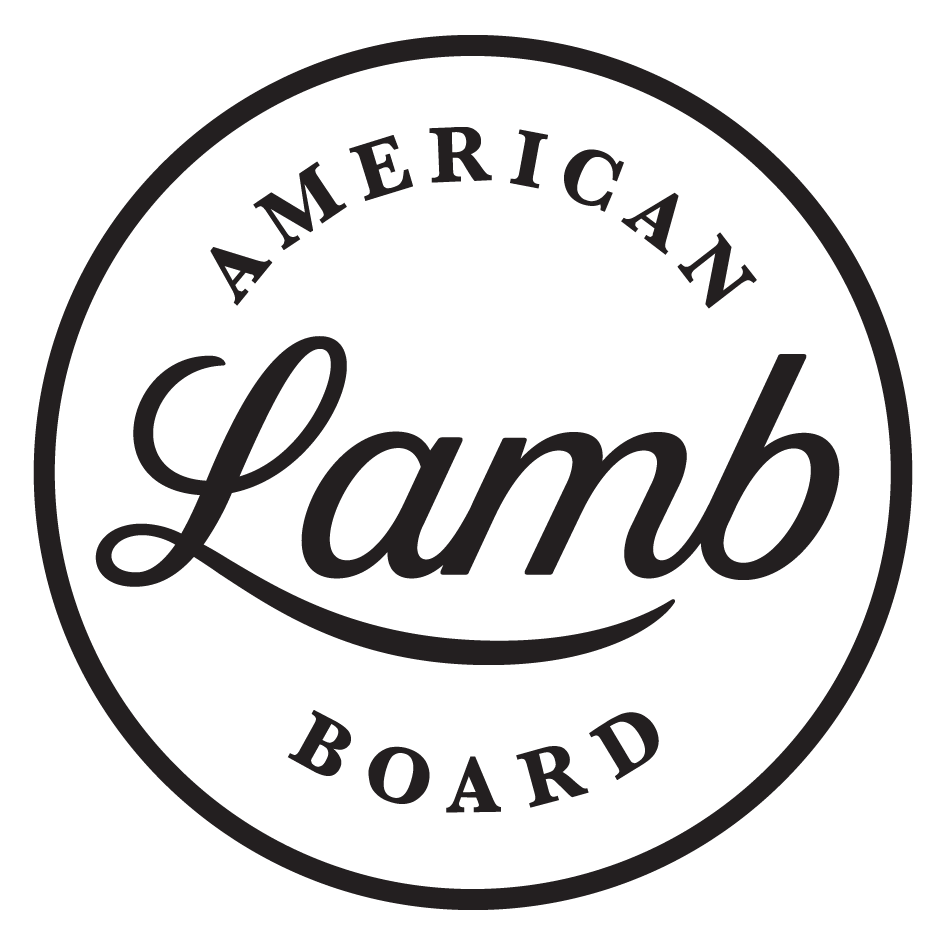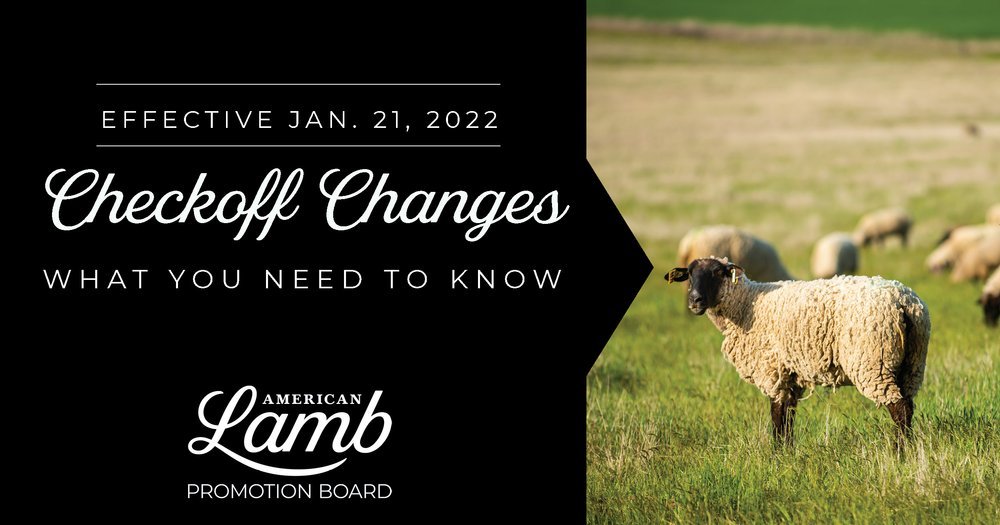Changes in Mandatory Lamb Checkoff Collections at Auction Markets Announced
For more information on how the checkoff works and is collected, click here.
While the American Lamb Checkoff rate is not changing, how the mandatory assessments are collected for animals sold through “market agencies” is changing. The change applies to animals sold through auctions, including sale barns, video/online sales, and sales at shows and fairs.
These auctions will now collect both live weight assessments and per head (first handler) assessments as of January 21, 2022. However, the delayed enforcement date for submitting these assessments is March 22, 2022. This allows time for auctions to adjust their systems without a penalty for late payments. If a producer or feeder sells animals to a first handler and has already paid the checkoff at an auction, a refund will be issued. To receive a refund, documentation will be required from the time of sale.
The national lamb checkoff, directed by the American Lamb Board (ALB), is funded by mandatory assessments (checkoff) paid by all segments of the sheep industry. By federal law, all sheep or lambs of any age, including ewes, rams, feeder and market lambs, breeding stock and cull animals, are subject to the national lamb checkoff assessment at the time of every sale. The mandatory American Lamb Checkoff assessment rates do not change. The live weight assessment is $.007 per pound and the first handler assessment is $.42 per head.
“It’s important to remember that the sheep industry passed the mandatory American Lamb Checkoff so it would be equitable and beneficial for both those owning the lambs prior to slaughter and those who harvest the meat. That’s why there are both live weight and per head assessments. And, these collections are only from U.S. born animals, allowing funds to specifically promote American Lamb. This does not change,” said ALB Chairman Peter Camino, Buffalo, WY.
The changes had to go through a vigorous USDA process. The federal register announcement is here.
To fully understand the value of these changes, a refresher about this particular checkoff helps. When the mandatory American Lamb Checkoff was enacted in 2002, most lambs were marketed through traditional channels. The lamb industry has evolved considerably in the past 20 years, particularly the growth of non-traditional markets. For example, direct sales to consumers, ethnic and farmers markets, and butcher shops now participate to a larger degree in the purchasing and processing of lamb and lamb products.
The 2002 Lamb Promotion, Research and Information Order mandates that live weight assessments be collected from producers or feeders and be forwarded to the next purchaser, if applicable. At the end of the process, the first handler (usually the processor) or exporter is responsible for submitting all live weight and per head assessments to the ALB. This is known as a pass-through method, with the bulk of collections made at the end of the process.
ALB listened to industry input, and it became clear that changes to the collection process were necessary. To maintain a fair and efficient mandatory American Lamb Checkoff for the entire industry and to reduce the burden on those collecting it, assessments need to be collected at the time of sale instead of the original pass-through method.
More information on how the mandatory American Lamb Checkoff works and how to pay or request refunds, is at LambResourceCenter.com. The USDA Agricultural Marketing Service website on the lamb program is also a good resource.
The American Lamb Board was put into place by the 2002 lamb promotion order. ALB is an industry-funded national research, promotion and information checkoff program that works on behalf of all American producers, feeders, seedstock producers, direct marketers and processors to build awareness and demand for American Lamb. ALB conducts promotion and research programs with the goal of creating greater demand and profitability for the entire industry. ALB does not promote imported lamb. It does not promote wool. ALB is not funded by dues and is forbidden by law to influence legislation. It exists to promote lamb to consumers and provide information to help producers raise lamb more efficiently and effectively.

